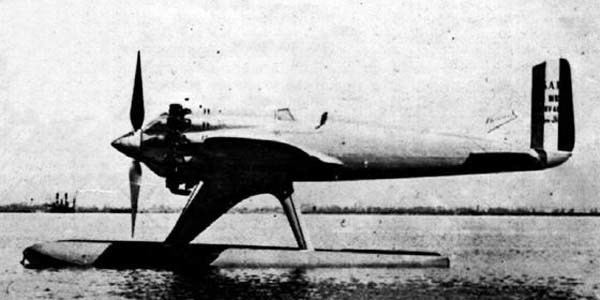Top speed 420 km/h Length 7.41 m | Wingspan 8.7 m | |
 | ||
Manufacturer | ||
The Bernard H.V.40 was a racing seaplane designed by Société des Avions Bernard for the French government to compete in the 1929 Schneider Trophy.
Contents
Design and development
The H.V.40 and H.V.41 were two designs ordered for use by the French team in the 1929 Schneider Trophy. The H.V.40 was designed by Georges Bruner and was similar to the Bernard 20 landplane fighter. It was a streamlined single-seat cantilever monoplane and had two metal floats attached underneath the fuselage on inverted vee-struts. The H.V.40 was to powered by a Gnome-Rhône 9Kfr Mistral radial engine. The aircraft was ready for testing by May 1929 but due to delays with the engine it did not fly and the French government withdrew the team from the 1929 race.
Originally designed to produce 1,000 hp (746 kW) the Mistral never achieved the required power output and the H.V.40 did not fly until July 1931. The first flight was from Lake Berre the base of the French team for the 1931 race. The H.V.40 flew well but had poor high-speed performance and was only used for a number of training flights.
Specifications
Data from The Illustrated Encyclopedia of Aircraft
General characteristics
Performance
